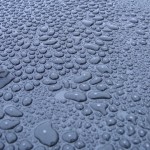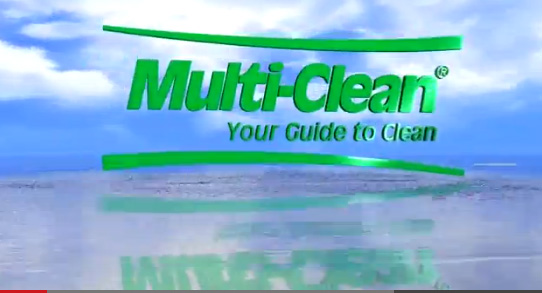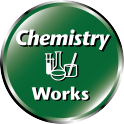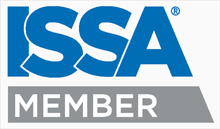Comparing Onsite Generation Cleaning Products
Recently, an article appeared in Facility Cleaning Decisions titled “Explaining On-Site Generation” authored by Heidi Wilcox. The article did a good job explaining the various technologies available and was written with a tilt toward the benefits of systems that claim to generate cleaning chemical products on site.
This blog post was written with an emphasis toward the benefits of formulated disinfectants and green cleaning products. We offer our own comparison of these products to on site generated chemical products and point out some distinct differences. This post could also be titled “Are We Sacrificing Clean to be Green?”
A Sustainable Story Too Good to be True?
The science of onsite generated chemical solutions with tap water and salt (Sodium Chloride) are well understood, as is the process of creating the chemical ozone in water. A great “green” story can be told with onsite generated chemical solutions. However, are these chemical products made onsite up to the task?
The “ONSITE” advocates will use generic statements that chemicals, fragrances, and dyes used in formulated products are toxic, which of course is not universally true as their statements may imply. To the contrary, formulated cleaners that are third party certified use non-toxic ingredients, with special scrutiny applied to fragrances (no allergans, asthmagens, or senitizers) and only food grade dyes are allowed.
What are Onsite Generated Cleaning Chemicals?
Sometimes misconstrued as chemical free, one common onsite generation system uses an electro-chemical process to convert tap water and the compound sodium chloride (NaCl) into two separate chemical solutions. The solutions created are very dilute water solutions containing sodium hydroxide (referred to as the general purpose cleaner), the other a dilute solution of hypochlorous acid (referred to as a disinfectant or sanitizer).
Another system uses electrical energy to generate ozone from atmospheric oxygen in a water solution. The ozone solutions is stabilized by removing impurities from the water. This solutions is often claimed to be a cleaner, disinfectant and sanitizing agent.
Examples of various onsite systems include names such as Orbio®, Pathosans®, Lotus Pro® , Geneon® and others.
Can onsite generated chemical solutions be labeled as a disinfectant or a sanitizer?
Unlike EPA registered disinfectants and sanitizers, onsite generated cleaning solutions are not EPA registered products. An onsite system making public health claims is regulated by the EPA as an antimicrobial pesticide device. The EPA exempts pesticide device registration, however, the EPA does require compliance with production, labeling and certain testing requirements. Further, the pesticide device must be manufactured in an EPA registered pesticide production facility. The EPA requires efficacy data to support any and all public health claims but does not require submission of the data. A possible issue for those using onsite generation, is having to trust that the manufacturer can support the public health claims being made.
Formulated Cleaning products make water wetter.
It is well known that water by itself is not an effective cleaning agent, owing to the high surface tension of water. This can be easily demonstrated by placing some water on any non-porous surface. A plastic plate works well to show this phenomenon. If you try to move the water around, you may notice that it tends to bead on surfaces rather than wet out on the surface. That’s because water molecules want to stick together through a molecular attraction referred to as “hydrogen bonding”. To overcome the effects of hydrogen bonding, very tiny amounts of a compound called a surfactant interferes with the hydrogen bonding of water molecules.
When surfactants are added to plain water, the water immediately begins to spread across the surface.
The soaps we use to wash our hands demonstrates the simple process of making water wetter. We know that using plain water to wash our hands doesn’t work well when any soil present. But when you add a little soap (which is a surfactant), VOILA! The water becomes wetter and lifts the dirt off of our hands. Shampoos, body washes and laundry detergents are also examples of surfactant based systems.
Onsite generated cleaning products do little to change the surface characteristic of water, in other words, surface tension is little changed and the onsite generated solutions bead up on surfaces similar to plain tap water.
Onsite Generation, a one size fits all, “GOOD ENOUGH” approach to cleaning.
A product formulated to clean glass is different from a general purpose cleaner, a neutral floor cleaner, a lime scale remover, a bathroom/tub cleaner, toilet bowl cleaner, or a heavy duty degreaser. A product designed to remove coffee stains is going to be different than one designed to remove oil. A product designed to sanitize food contact surfaces is different than one designed to clean and disinfectant hard surfaces in one step. With onsite generation, one product magically does it all! That’s seems AMAZING!!!
Hidden Costs of Onsite Generation
The machines that generate onsite solutions are highly sophisticated. This means regular ongoing maintenance and calibration, which usually requires a specialized service. Can you be sure the machine is producing sanitizing or disinfecting agents at the correct concentration? Further, questions remain about the useful life of this equipment before it needs total replacement.
What does the consumer prefer?
We believe that users of cleaning products prefer a light, fresh fragrance that helps establish that the area has been cleaned. We also believe the majority of building occupants enjoy a fragrance that connotes “clean”. Third party certified green products can only use fragrances that contain no allergans, asthmagens or sensitizing agents.
Dyes are used in products to help distinguish different products and facilitate staff training on the proper use of cleaning products. Third party certified cleaning products are required to use food grade dyes.
Our Conclusion: For performance and aesthetic qualities, our opinion is the consumer prefers a formulated product. For those using onsite generation systems, ask the question” “are you sacrificing clean to be green?”
APPENDIX: Comparison of formulated cleaning products to onsite generation.
| Formulated Cleaning Product | On Site Generation Cleaning Products | |
| Costs | Ongoing purchases of cleaning products | Upfront capitol equipment investment. Ongoing fees including lease, maintenance, calibration, repair and replacement. |
| Equipment Maintenance | None, although a dilution system function may need to be periodically checked. | Ongoing maintenance and replacement costs. A sophisticated piece of equipment. Expected life of maintained equipment maybe as little as 4 years. If poorly maintained, replacement costs may be soon than expected. |
| Ease of Use | Easy if used through a dispensing system. | Similar to using a dispensing system. |
| Products made | Products formulated to match the cleaning need and soil. EPA registered disinfectant products with verified public health claims. | Depending on equipment, makes 1 or 2 chemical products that claim to be a: glass cleaner, all purpose cleaner, degreaser, carpet cleaner, spotter, sanitizer, deodorizer, disinfectant. |
| Fragrances and Dyes | Colors and Fragrances added. Third party certified green products use food grade dyes and fragrances free of allergans, asthmagens, and sensitizing agents. Dyes make it easy to discern products and facilitate training. | No dyes or fragrances. Looks like water. When two different products are made, proper labeling is critical because both products look the same. |
| Cleaning Ability | Reduces surface tension of water to allow efficient wetting of surfaces and suspension of soils. Products can be made that target different types of soils. | Little to no surface tension reduction of water making wetting of surfaces and suspension of soils more difficult. Limitations on the type of soil that can be cleaned. Relatively ineffective on greasy soils and mineral based soils. |
| Dilution Source | Uses tap water. Dispensing systems for accurate dilutions. | Exclusively through proprietary equipment. |
| Storage of Diluted Solutions | Properly stored solutions 30 days or more. | Some of limited life, particularly ozone solutions. |
| Sustainability | Can be sustainable if using third party certified product and super concentrates diluted through a dilution control dispenser. | Reductions in transportation costs, containers, and manufacturing costs and resources. |
| Auxiliary Functions | Cleaning products can be formulated with beneficial bacteria, enzymes, hydrogen peroxide, and protective agents that offer functions that go beyond cleaning. Things like anti-soiling and odor mitigation can be integrated into formulated products. | You get what you get. It works good enough. |
| EPA Registered | EPA Registered Disinfectants and Sanitizers with verified pathogen claims. | Solutions produced are not EPA registered. |






Thanks for sharing this information, I really appreciate the content you have described and the helpful information you gave us about formulated cleaning products. This treatment is very nice and helpful. Learned a lot from this.
Commercial cleaning supplies